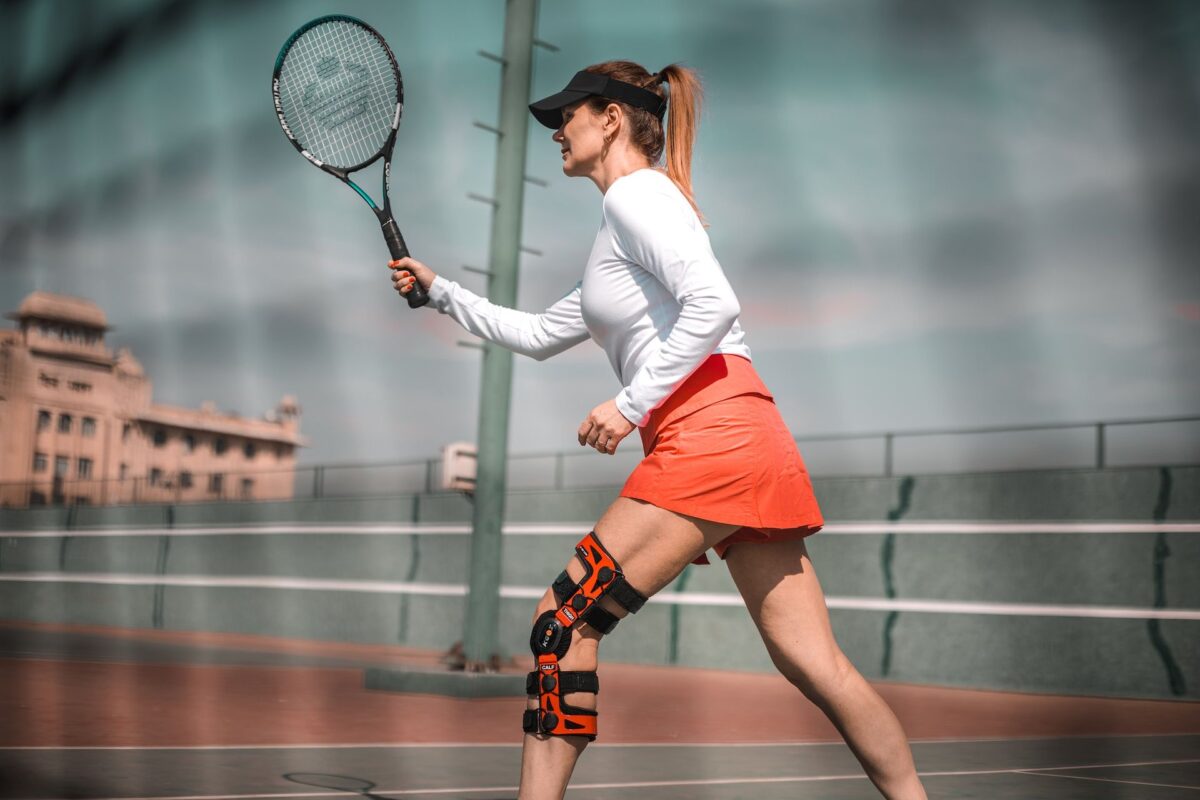Your cart is currently empty!
Preventing Injuries When Playing Tennis: 3 Essential Tips
Table of Contents
There is no doubt that tennis is one of the most beautiful and popular sports in the world. In fact, nearly 90 million people play tennis at least once a year. However, it is also an intensely demanding sport that can lead to many potential injuries. That’s why it’s essential to prepare and prevent tennis injury whenever possible.
The authors of From Breakpoint to Advantage: A Practical Guide to Optimal Tennis Health and Performance, Babette Pluim and Marc Safran, argue that the profile of tennis injuries differs from other sports due to the combination of biomechanics, physical demands, and equipment.
According to a study on tennis injuries, a tennis player suffers from up to three injuries a year on average. They are most commonly in the lower and upper extremities and less commonly in the trunk area. But don’t let that stop you from enjoying this beautiful game.
Playing tennis recreationally can boost health optimization, including reducing the risk of cardiovascular disease. It can also help enrich your social life, improving overall mental health.
Here are some tips to help you prevent injuries when playing tennis.
Choose Proper Equipment
As previously mentioned by Pluim and Safran, tennis equipment can play a significant role in the profile of injuries. That’s one of the things that makes it stand out from other sports. It is one more reason to choose the right gear that will help protect you from injury during tennis season.
First, you need a racket that fits your experience level and your game style. For example, your choice will be different is you prefer singles or doubles play, serve/volley or baseline play, etc. Consider the weight of the racket, string tension, and grip size.
A heavier racket is going to be more powerful and absorb shock better. On the other hand, a lighter one will help increase the speed of your strokes and make it easier for you to move around the net.
Lower string tension will reduce the shock on your elbow. The correct grip size will help prevent the possibility of wrist strain and tennis elbow.

Just as importantly, choose tennis shoes that fit correctly. They should support your ankles and arches and are appropriate for the type of surface you are playing on.
We recommend getting a professional opinion on how to select the equipment that is right for you. That’s one step closer to avoiding any injuries.
Warm Up and Cool Down to Prevent Tennis Injury
Tennis is not only about what happens on the court. We can’t overemphasize the importance of good preparation before playing and plentiful time for recovery after playing. That’s the best way to prevent tennis injury.
A warm-up routine that includes dynamic stretching and practicing tennis strokes can help you prevent muscular strain. It can help improve flexibility of your tendons and ligaments and improve the motion of your joints.
To better prepare yourself and lower your chances of injury, you can also use red light therapy. It is a safe, natural, and effective type of treatment. It uses light-emitting diodes that imitate natural sunlight at dusk and dawn but without harmful UV rays.
Red light therapy consists of red light and near-infrared light. Red light belongs to the visible light spectrum. Its wavelengths are typically between 630 and 700 nanometers. For example, it is most effective on the skin’s surface regarding wound healing.
Near-infrared light belongs to the invisible light spectrum, and its wavelengths are considerably longer, from 700 nanometers to 2,500. Though those between 810 and 850 have proven to be the most effective. Near-infrared light penetrates beyond the surface of the skin, helping you increase your muscle performance, boost your energy levels, help manage your pain and relieve your stress.
Simply apply red light therapy in the comfort of your own home through a portable, ergonomic, user-friendly device. You can use Flexbeam once a day before playing to help you improve your energy level and reduce anxiety.
You can also use it an hour before you get on the court over muscles that are sore or those that require the most use, as well as an hour after the game to help you combat muscular fatigue and speed up recovery.
Listen to Your Body
Ultimately, your body will tell you what to do and what not to do better than anything if you listen closely.
First of all, know when to ease up. Overexertion can easily lead to injury, so you must give your body enough time to rest and recover between training and matches. That is essential if you plan to prevent tennis injury.
While playing, take frequent breaks to avoid constant repetitive movements that could lead to muscle strains, tennis elbow, and rotator cuff-related injuries.
Don’t overdo it. We know it feels great to be on the court, but if you feel any inkling of pain or discomfort, stop playing immediately to prevent further strain or damage.
If an injury does occur, seek first aid or medical treatment as soon as possible, regardless of the severity of the injury. Allow the injury to heal completely before getting back to playing again. If you don’t, you may risk permanent injury that could keep you off the court indefinitely.
If you suffer from repeated injuries, get expert advice on appropriate taping or bracing. You can also use an ankle brace or a knee brace that will help stabilize and support you while also easing the pressure on your joints and preventing further injury or damage.
Drink plenty of fluids before, during, and after your training session or match. If you’re playing outside in the heat, apply SPF 30 sunscreen, wear light, protective clothing and a hat to protect you from the sun. Avoid playing if the court is still wet from the rain because a slippery surface and heavy, wet balls can easily lead to injuries.
Finally, incorrect playing technique may also contribute to elbow and wrist injury. Make sure to use your body’s full strength to hit a ball rather than just relying on your arm. Proper timing, appropriate strength, and coordination of your legs, hips, and trunk will give your strokes the maximum amount of power and precision, which are equally important in tennis. If possible, consult a qualified coach to help you develop your technique appropriately to prevent tennis injury.
Following these tips will not only help you improve your tennis game, it will also help you prevent injury and contribute to your overall physical and mental well-being.
Sources
- Musa M. How many people play tennis in the world? | 2024 Report. Tennis Racket Ball. Published July 30, 2023. https://tennisracketball.com/guide/how-many-people-play-tennis/
- Pluim BM, Staal JB, Windler GE, Jayanthi N. Tennis injuries: occurrence, aetiology, and prevention. Br J Sports Med. 2006;40(5):415-423. doi:10.1136/bjsm.2005.023184
- Benefits of playing tennis | USTA. https://www.usta.com/en/home/improve/tennis-health—fitness/national/benefits-of-playing-tennis.html
- Erdle B, Brouxhon SM, Kaplan MM, VanBuskirk J, Pentland AP. Effects of Continuous-Wave (670-Nm) red light on wound healing. Dermatologic Surgery. 2008;34(3):320-325. doi:10.1111/j.1524-4725.2007.34065.x
- Ferraresi C, de Brito Oliveira T, de Oliveira Zafalon L, et al. Effects of low level laser therapy (808 nm) on physical strength training in humans. Lasers Med Sci. 2011;26(3):349-358. doi:10.1007/s10103-010-0855-0
- DeSmet KD, Paz D, Corry JJ, et al. Clinical and experimental applications of NIR-LED photobiomodulation. Photomedicine and Laser Surgery. 2006;24(2):121-128. doi:10.1089/pho.2006.24.121
